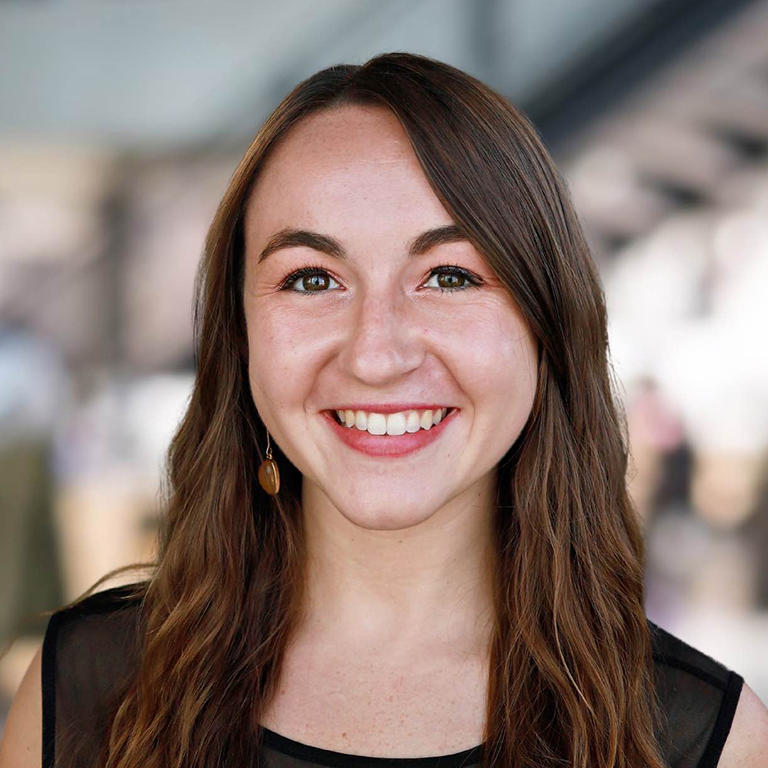This Q&A series highlights McKinney Climate Fellows alumni and their professional journeys within Indiana and beyond. The McKinney Climate Fellows program, administered by Indiana University’s Environmental Resilience Institute and Integrated Program in the Environment, connects IU undergraduate and graduate students interested in climate, sustainability, and community resilience with career experiences.
When Amber Greaney was earning a degree in sustainable management and policy at the IUPUI O’Neill School of Public and Environmental Affairs, she was sure her career would take her outside the Midwest to a place that was more invested in sustainability. Her experience as a McKinney Climate Fellow with Keramida in 2019, however, convinced her that staying in Indiana meant she could make an even bigger impact.
After earning her master’s from O’Neill, Greaney used the skills she developed as a fellow to help the City of Indianapolis launch a public energy benchmarking program. In 2022, she returned to Keramida as a full-time employee where she works with local governments across the county who want to develop or make progress on their climate action plans.
The following interview has been lightly edited for length and clarity.
What major projects did you work on during your placement as a fellow with Keramida?
One of my biggest projects at Keramida was helping companies with their CDP reports, one of the most common reporting frameworks for disclosing environmental impact. CDP, formerly known as the Carbon Disclosure Project, is commonly used as larger companies collect data on their supply chain to complete their scope 3 inventory. Thus, larger companies ask their suppliers to submit to CDP so they can understand how their suppliers are managing their greenhouse gas emissions and climate-related risks.
A lot of what I did in the summer was help provide mock scores to companies to give them an idea of what letter grade they would likely receive from CDP and how they could improve. I also worked on spearheading the United Nations Sustainable Development Goals (SDG) project at Keramida where I investigated how cities and companies were reporting on SDGs.
What did you learn as a McKinney Climate Fellow and how did it inform your career path?
One thing I learned was sustainability reporting. It's one of those skills I gained during the fellowship that I was not going to learn in school. Having that technical experience gave me a leg up when I was applying to jobs after grad school because the City of Indianapolis was looking for someone who knew how to respond to a CDP questionnaire. Since I had experience, that helped get me hired.
On the market trend side, I was able to understand how business drives sustainability. Businesses can often drive sustainability forward faster than government, and that was very inspiring for me to see.
What caused you to pursue a career focused on climate and sustainability? And why did you decide to stay in Indiana to work?
Growing up, my mom was a special education teacher, which meant she got the whole summer off. So, every summer we would pack up her car and go camping for three months. It was just me and her out in the forest, and it gave me a love for the environment.
When I got to high school, I took AP Environmental Science and learned about the travesties that would happen to future generations. I thought somebody must do something about this, why not me?
I heard about the O’Neill School of Public and Environmental Affairs and how IUPUI and IU Bloomington were the only two schools in Indiana with sustainability degrees. I picked IUPUI because I wanted to be in a city. When I was in school, I was sure I would get out of Indiana to one of the coasts—areas that invested more in sustainability. As I did my McKinney Climate Fellowship and the Peterson Fellowship, I met so many amazing people who are very passionate about what they do. I fell in love with Indianapolis and realized my sustainability work was much needed here in Indiana.




